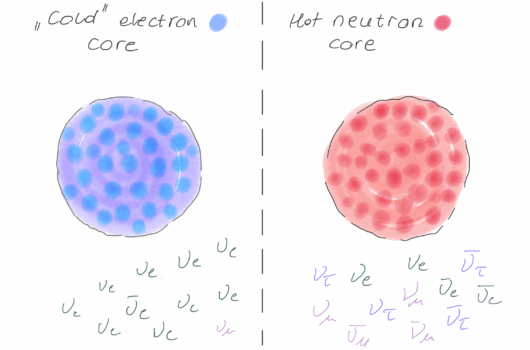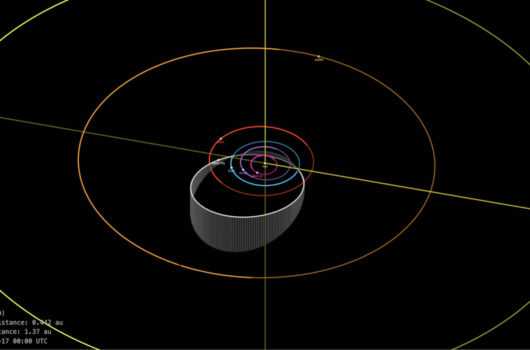The g-mode Oscillation in Hybrid Stars: A Tale of Two Sound Speeds
The g-mode Oscillation in Hybrid Stars: A Tale of Two Sound Speeds
View
Abstract
We study the principal core g-mode oscillation in hybrid stars containing quark matter and find that they have an unusually large frequency range (≈ 200 – 600 Hz) compared to ordinary neutron stars or self-bound quark stars of the same mass. Theoretical arguments and numerical calculations that trace this effect to the difference in the behaviour of the equilibrium and adiabatic sound speeds in the mixed phase of quarks and nucleons are provided. We propose that the sensitivity of core g-mode oscillations to non-nucleonic matter in neutron stars could be due to the presence of a mixed quark-nucleon phase. Based on our analysis, we conclude that for binary mergers where one or both components may be a hybrid star, the fraction of tidal energy pumped into resonant g-modes in hybrid stars can exceed that of a normal neutron star by a factor of 2-3, although resonance occurs during the last stages of inspiral. A self-bound star, on the other hand, has a much weaker tidal overlap with the g-mode. The cumulative tidal phase error in hybrid stars, Δϕ≅0.5 radians, is comparable to that from tides in ordinary neutron stars, presenting a challenge in distinguishing between the two cases. However, should the principal g-mode be excited to sufficient amplitude for detection in a post-merger remnant with quark matter in its interior, its frequency would be a possible indication for the existence of non-nucleonic matter in neutron stars.




